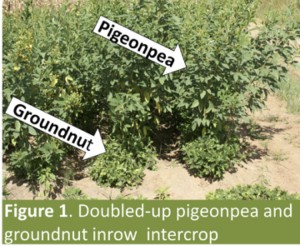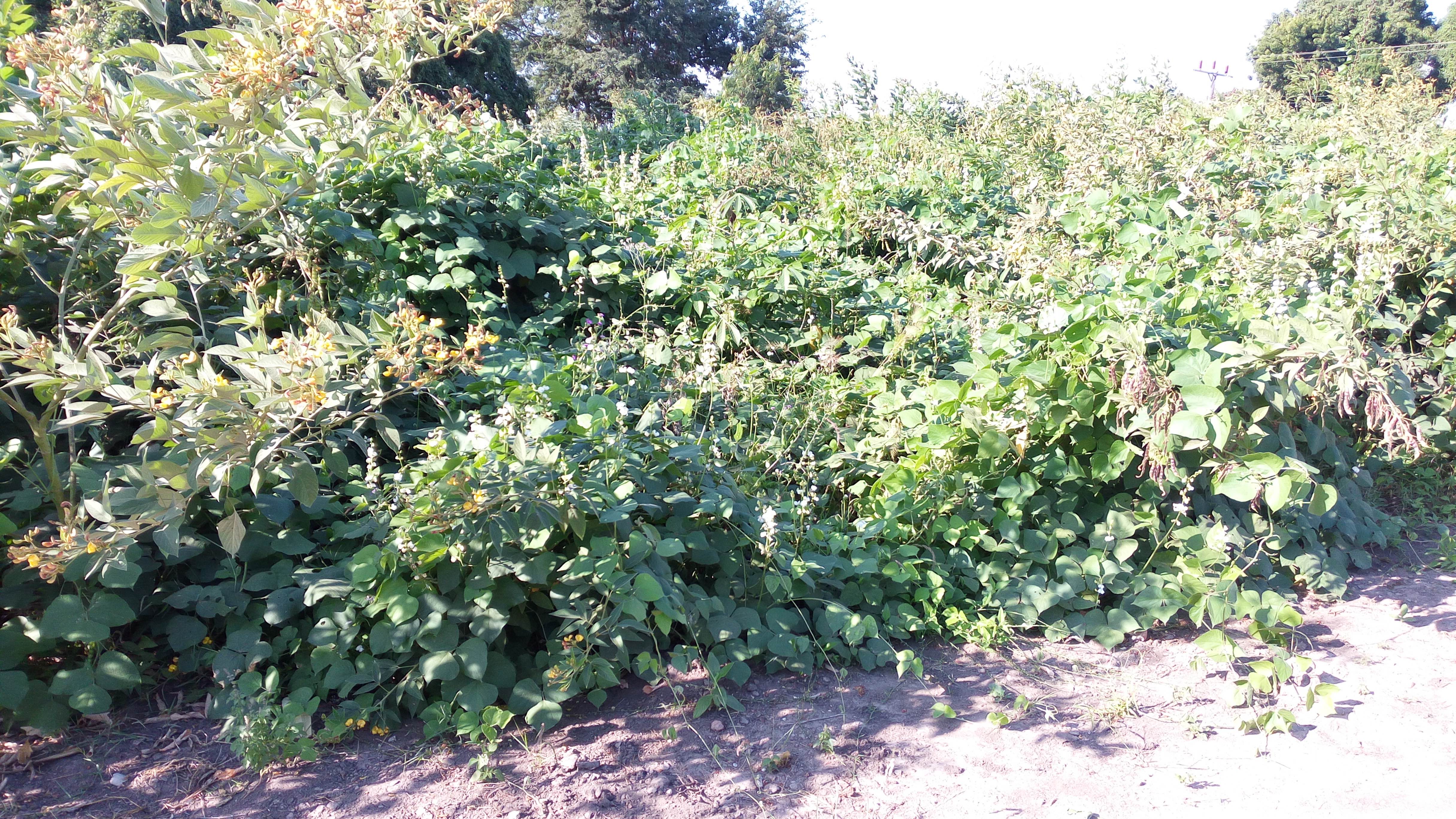Doubled Up Legumes
Doubled Up Legumes
Description:
 Intercropping, a common practice in sub-Saharan Africa (SSA), is when different crops are cultivated at the same time and in the same space. Smallholder farmers intercrop to diversify income sources, reduce risks from crop failure, and sustainably intensify their operations on limited land resources. Additionally, some crops are considered too minor to occupy land on their own and therefore grown in crop mixtures. Most of the intercrop systems in SSA involve maize as the main crop and a grain legume such as groundnut as the companion crop. A relatively new approach is intercropping two legumes that have different but compatible growth habits. An example is that of a pigeonpea and groundnut intercrop (Figure 1). The approach is known as the doubled-up legume technology, an approach that takes advantage of beneficial interactions between the two legume crops. The main goal of the doubled-up legume technology is to ‘double’ the farmer’s crops and the soil fertility benefits of cropping legumes.
Intercropping, a common practice in sub-Saharan Africa (SSA), is when different crops are cultivated at the same time and in the same space. Smallholder farmers intercrop to diversify income sources, reduce risks from crop failure, and sustainably intensify their operations on limited land resources. Additionally, some crops are considered too minor to occupy land on their own and therefore grown in crop mixtures. Most of the intercrop systems in SSA involve maize as the main crop and a grain legume such as groundnut as the companion crop. A relatively new approach is intercropping two legumes that have different but compatible growth habits. An example is that of a pigeonpea and groundnut intercrop (Figure 1). The approach is known as the doubled-up legume technology, an approach that takes advantage of beneficial interactions between the two legume crops. The main goal of the doubled-up legume technology is to ‘double’ the farmer’s crops and the soil fertility benefits of cropping legumes.
Principles:
- Sustainable intensification with legumes
- Increasing agrobiodiversity to cope with climate change
- Incorporating crop residues in the soil to prevent soil erosion
Debates:
- Possibility of increased labor requirements
- Willingness of farmers to ‘sacrifice’ land on two legumes
- Uncontrolled livestock grazing after maize harvest reduces pigeonpea grain
- Questions about the sustainability of the approach with regards to expensive legume seed
Links:
FAO profile of our research on legumes and land productivity in Malawi (pdf)
Learning lab resources:
Gwenambira, C. (2015). Below- and Aboveground Pigeonpea Productivity in on-Farm Sole and Intercrop Systems in Central Malawi. Michigan State University. Ann Arbor: ProQuest. Web.
Snapp, S. S. (1998). Soil nutrient status of smallholder farms in Malawi 1.Communications in Soil Science & Plant Analysis, 29(17-18), 2571-2588.
Snapp, S. S., Jones, R. B., Minja, E. M., Rusike, J., & Silim, S. N. (2003). Pigeonpea for Africa: a versatile vegetable—and more. HortScience, 38(6), 1073-1079.
Bibliography:
Broughton, W. J., Hernandez, G., Blair, M., Beebe, S., Gepts, P., & Vanderleyden, J. (2003). Beans (Phaseolus spp.)–model food legumes. Plant and soil, 252(1), 55-128.
Giller, K. E., & Cadisch, G. (1995). Future benefits from biological N fixation: an ecological approach to agriculture. In Management of Biological N Fixation for the Development of More Productive and Sustainable Agricultural Systems (pp. 255-277). Springer Netherlands.
Nene, Y. L., Hall, S. D., & Sheila, V. K. (1990). The pigeonpea. CAB International.
Challenges Addressed: Smallholder Demographics (land scarcity); Soil Quality, Soil Fertility, and Low Productivity; Climate change; Poor Access to Inorganic and Organic Inputs; Poverty & Food Insecurity.
Tags: Agrobiodiversity, Agronomy, Soil Science, Crop Science, Sustainable Intensification.

